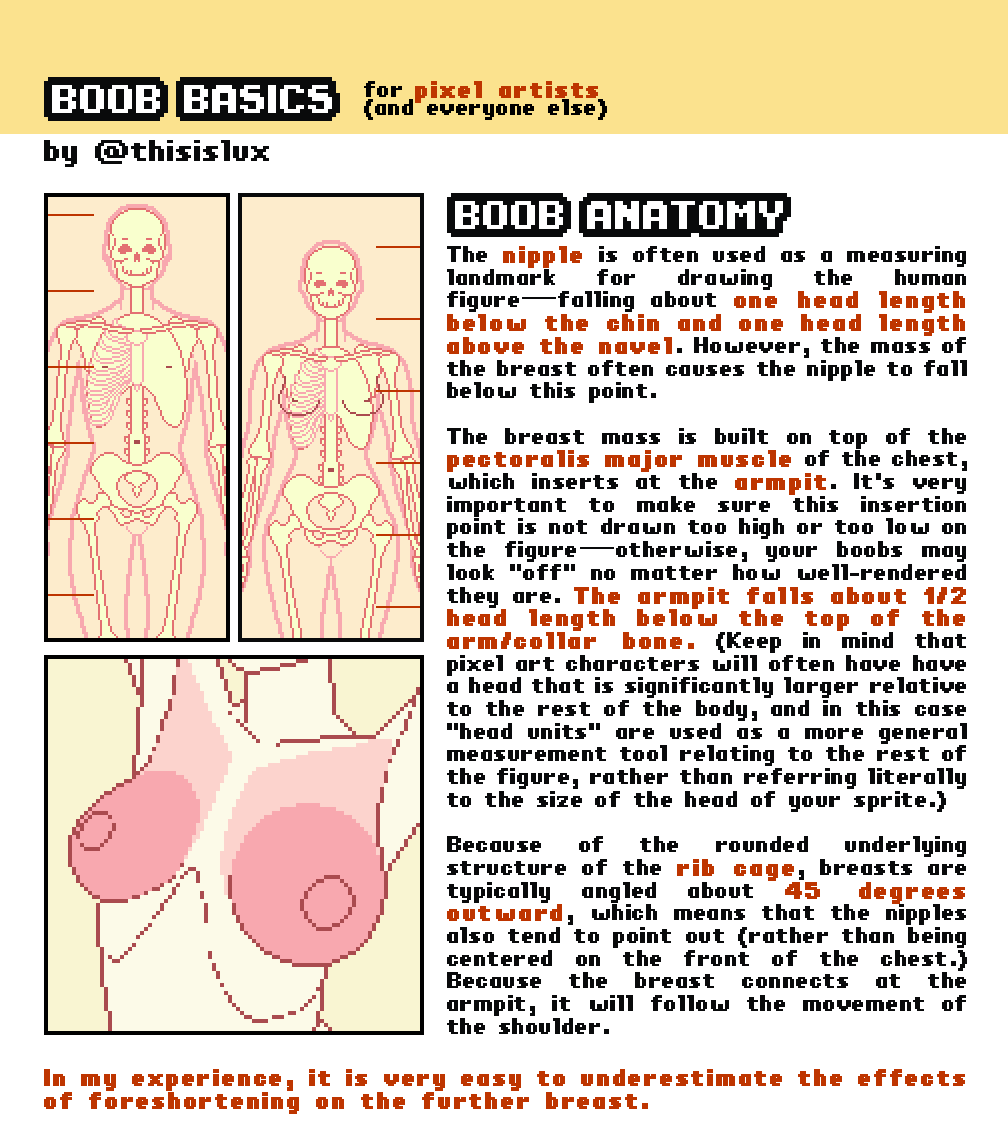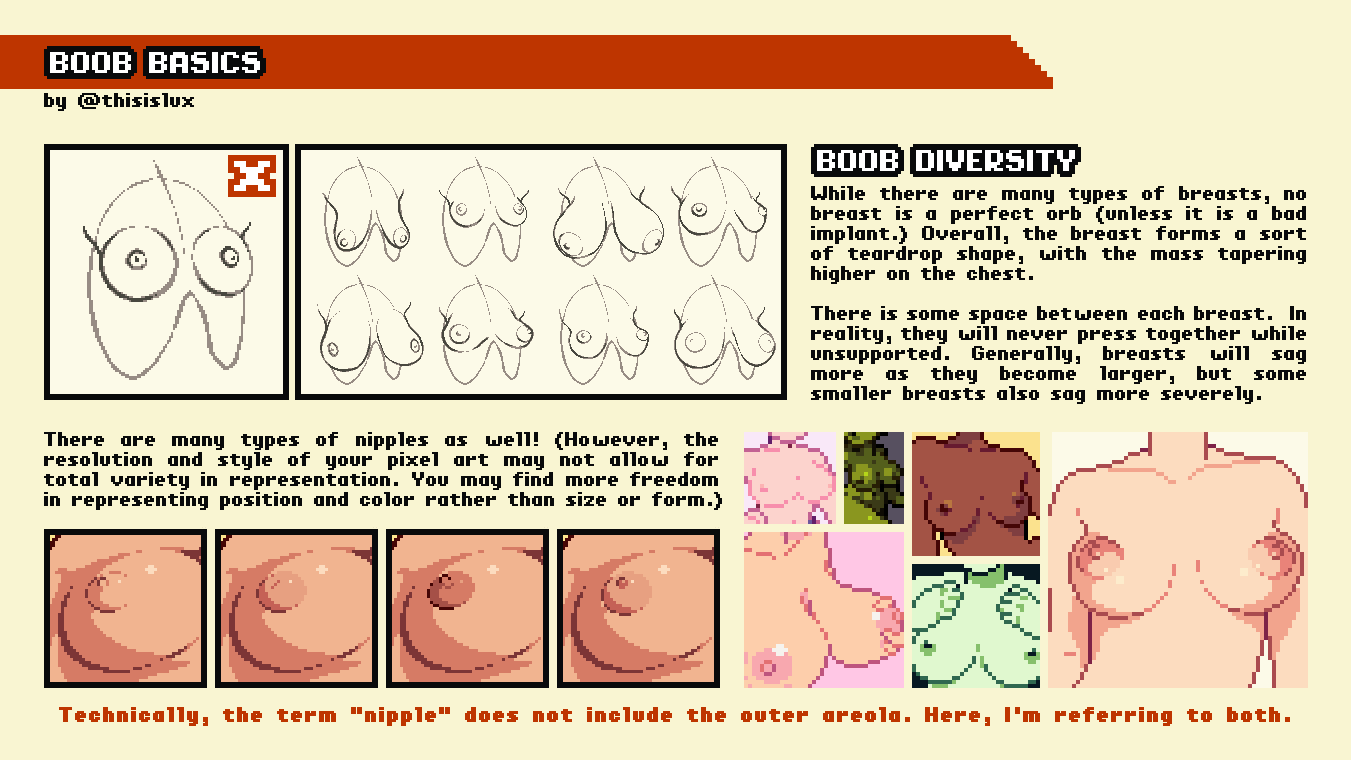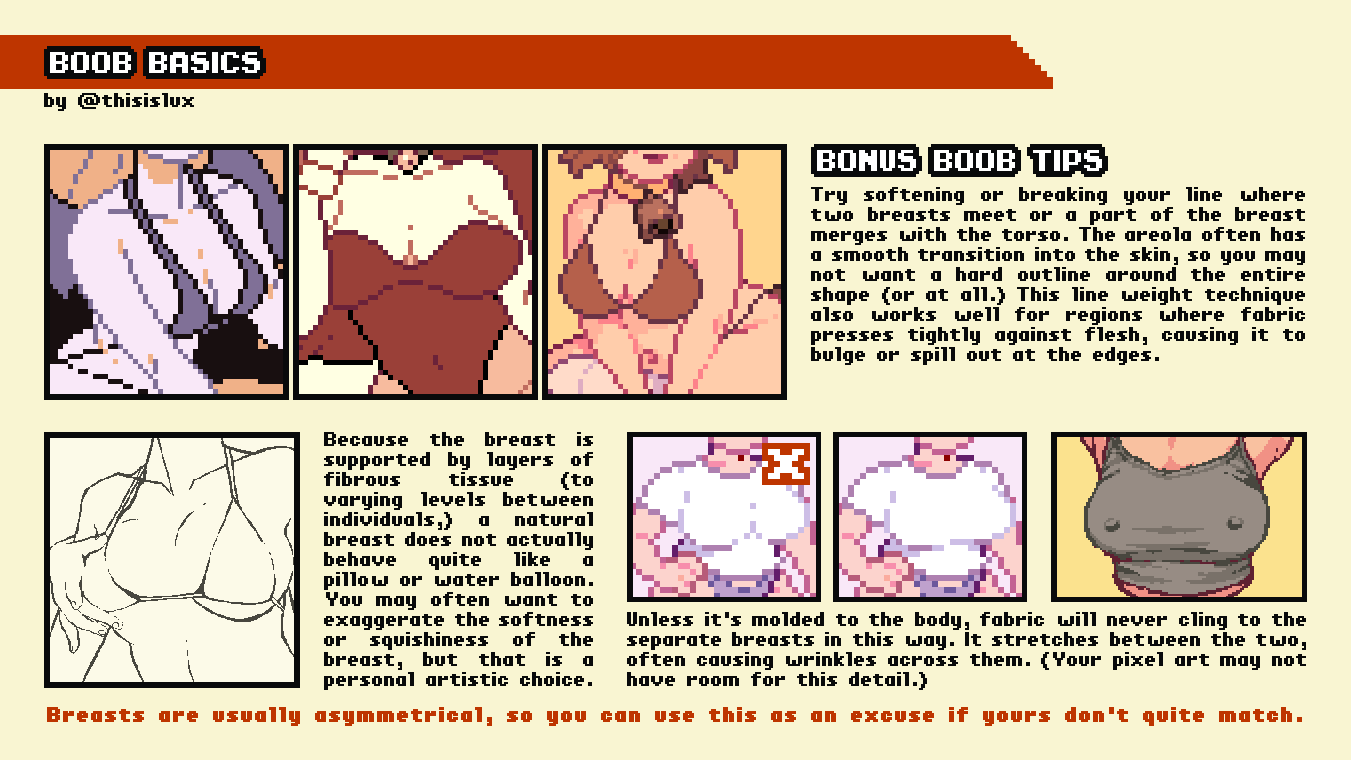Boob Basics for Pixel Artists (and Everyone Else)
Breasts are, in my opinion, one of the more difficult aspects of the human form to convincingly capture in pixel art. Anatomy is a massive topic on its own, and I would recommend reading some traditional art books on the topic if you'd like to explore further (I like this one,) and there are also some great free resources online. There's no replacement for experience, so you'll probably have to study and draw a lot of breasts before it really starts to click (at least they're nice to look at.)
The following is a graphical mini-tutorial I created with Twitter in mind, which covers what I believe to be the most important things to consider when pixeling a nice set of milkers. Follow me on Twitter for more visual accompaniments to my writing, and stay tuned for more long-form articles in the near future.



Subscribe to Pixel Parmesan
Get the latest posts delivered right to your inbox